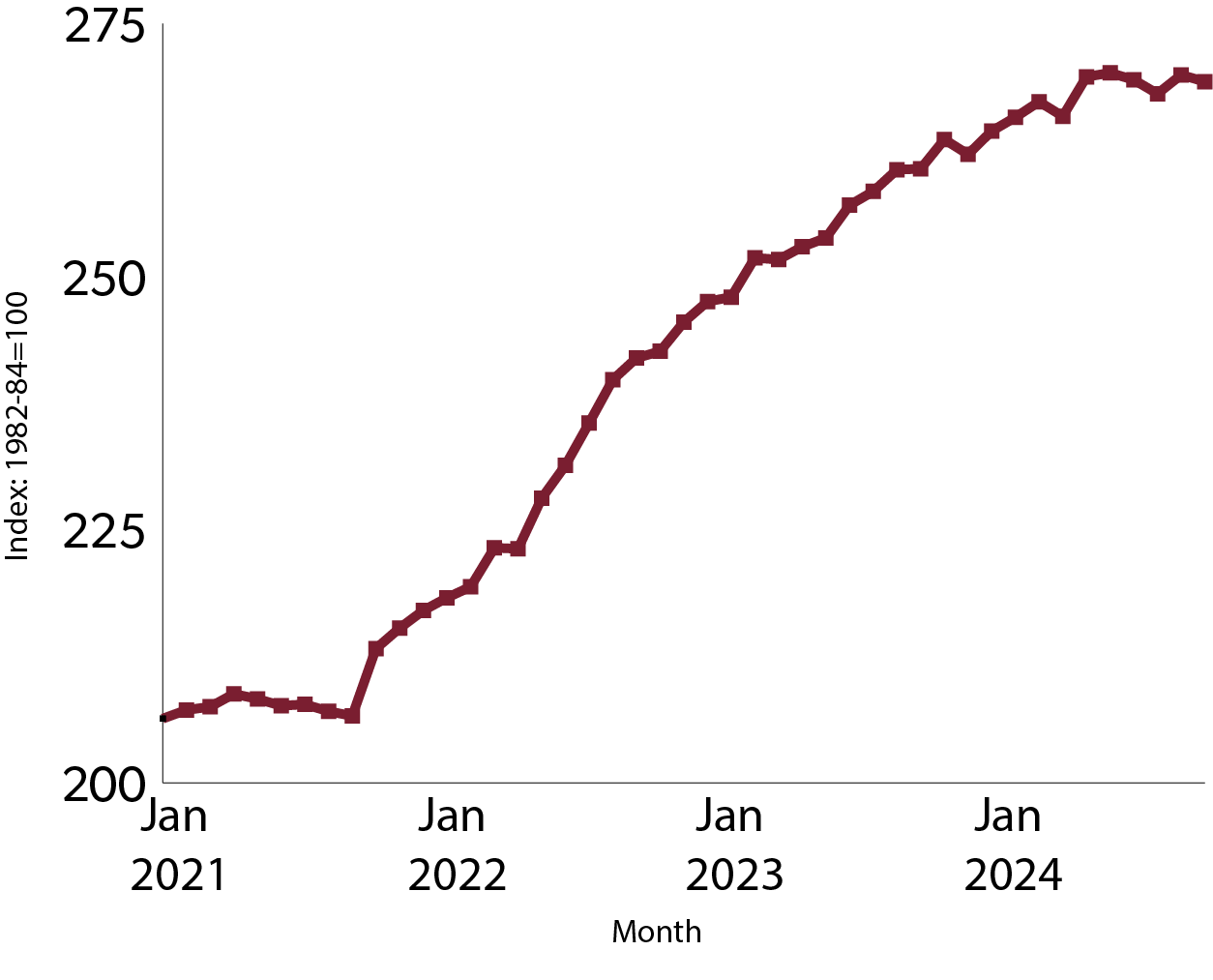This coming Halloween, Americans preparing for trick-or-treating are in for an early fright, not just from ghosts, but from high and rising sugar prices. Already burdened by inflation, they face additional costs due to sugar protectionism when they stock up on candy, making the spooky season even more expensive.
The U.S. government’s sugar program, which is designed to benefit domestic sugar producers, is one of the main reasons why Americans are paying extra for sugar. By restricting the amount of sugar imports and imposing high tariffs, the program forces candy producers to buy more expensive domestic sugar, driving up costs for businesses and consumers alike.
Sugar prices in the U.S. have been steadily increasing in recent years, and this trend has continued into 2024. According to recent data from the Bureau of Labor Statistics, sugar prices have increased significantly since 2021, further adding to the inflationary burden on consumers.
Figure 1: Consumer Price Index for Sugar and Sugar Substitutes

Source: Bureau of Labor Statistics
The high cost of the sugar program is evident when looking at how much sugar costs in the United States relative to the rest of the world. Americans are paying around double the global market price for sugar. Recent data from the U.S. Department of Agriculture shows that Americans are paying 36.32 cents per pound for raw sugar, while the global price is significantly lower at 20.69 cents per pound. Americans pay 51.5 cents per pound for refined sugar, while the average world price is just 24.9 cents per pound.
According to a recent Government Accountability Office (GAO) report, the sugar program costs consumers between $2.5 billion to $3.5 billion annually. GAO found that the cost to consumers far outweighs the benefit to producers, imposing a net economic cost of about $1 billion per year.
The sugar program shows how protectionist policies do more harm than good, favoring a small group of politically connected producers at the expense of everyone else. But it doesn’t have to be this way. Eliminating or reforming the program would help bring U.S. sugar prices back in line with global markets, reducing costs for American families and businesses. Americans should not have to worry about being “tricked” by a protectionist sugar policy into paying extra for candy.

